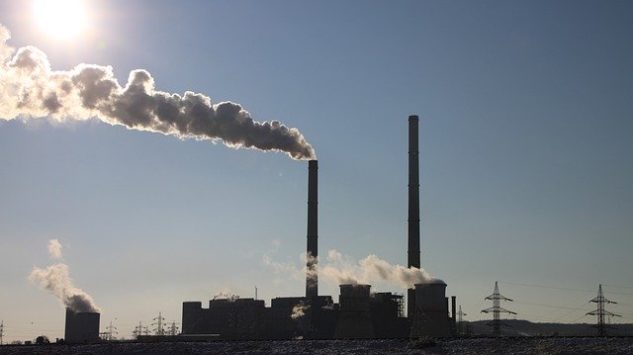Issue Briefs

Climate Emergency?
Paolo von Schirach
August 17th, 2020
WASHINGTON – Most sensible people would agree today that climate change due to global warming is a serious problem. And everybody now knows that at the source of all this we find man-made increased levels of greenhouse gases in the atmosphere. And we also know that all this is happening because we humans keep burning significant –indeed increasing– amounts of high emissions fossil fuels in order to produce the energy we need to power the world economy.
Dealing with the problem?
That said, we also know that public opinion in the West and most elected leaders have come to agree that the most sensible way to stop global warming is to substantially reduce the consumption of fossil fuels, choosing instead zero emissions renewable energy technologies in order to keep the world economy moving.
On the surface this looks like a very good plan. Out with dirty energy, in with clean energy, such as solar and wind. Good plan in principle. But, according to some, not in practice. According to Bjorn Lomborg, Danish author of the recently released book False Alarm, (subtitle: How Climate Change Panic Costs Us Trillions, Hurts the Poor, And Fails To Fix The Planet), all the well meaning clean energy policies enacted or planned share a common defect: they will cost an enormous amount of money and they will not produce the intended effects. They simply will not work.
Wrong approach
How so? Well, because renewable energy technologies, at the current stage of development, are both still very expensive and not very efficient. While costs for solar and wind have come down dramatically in the last decade, these two main sources of clean, emission free, energy are still not cost-effective compared to the dirty fossil fuels. By forcing their large scale adoption now, via mandates, taxes and subsidies, many governments are diverting enormous resources to immature renewable energy technologies in a very inefficient way. We do get some clean energy. But at a very high cost, and not enough of it to make a real change.
Goals will not be met
Besides, and here is the real problem, forced adoption is manifestly not working as intended. While the adoption of renewable energy is definitely growing worldwide, the rate of growth is still too modest, if the goal is to replace fossil fuels before global temperatures climb up even further. In plain language, we have chosen a very expensive medicine that in the end will not be able to cure planet Earth –our intended goal.
And it gets worse. Notwithstanding the solemn pledges made by so many world leaders at the signing of the 2015 Paris Accord, two facts should get our attention. Number one, even if all signatories dutifully fulfilled all their pledges about fossil fuels consumption cuts, this would make practically no difference on world temperatures. Got that? No difference. Number two, at this stage, no country is on track to fulfill the energy consumption pledges they made.
So, argues Lomborg in his book, here the situation becomes almost absurd. Many countries are committed to spend a fortune on something that will produce almost no tangible effect. And we shall fail to meet our targets anyway.
A different approach?
If this is indeed so, may be it would be good to pause for one second and take stock. Please note that Lomborg is not a “climate denier”. In his book he repeatedly states that climate change is real, is man made, is due to fossil fuels consumption and that it will have mostly negative consequences for the planet.
So what is to be done? Lomborg proposes a different, two tracks approach. He argues that instead of spending a fortune on renewables that cost too much, (especially when it comes to the meagre budgets of poor developing countries), and produce little, it would be wiser to invest in adaptation to climate change.
Adaptation
For instance, we know that higher temperatures are causing the increased melting of ice caps on the two Poles of the Earth. This is causing progressively higher sea levels. Overtime, higher sea levels will cause the flooding of many coastal areas around the world that will no longer be suitable for human settlements. We know all this. And this is very serious.
However, remedial actions are possible and reasonably inexpensive, provided we start working now on the necessary countermeasures. Indeed, Lomborg argues, humans have been building dikes to keep the sea away for centuries. Ask the Dutch, whose country is largely below sea level. Of course, it would be better if we could prevent higher sea levels. But at the moment we simply lack the technologies to reverse this trend. Therefore, says Lomborg, let’s adapt to this unfortunate development by protecting coastal areas using engineering technologies that are well known and efficient.
More R&D spending will give us new energy sources
That said, Lomborg does not conclude that workable clean energy solutions are impossible. He simply says that what we have developed so far will not do the trick. Nonetheless, he strongly recommends that all advanced societies engage in a truly robust R & D effort aimed at exploring new energy technologies. Eventually we shall come up with something that will be both clean (zero emissions) and super efficient. At that point consumers will not need incentives, or tax breaks to adopt it. The new clean energy technologies will be chosen because they will be better and cheaper.
The views and opinions expressed in this issue brief are those of the author.
 |
Paolo von Schirach is the President of the Global Policy Institute, a Washington DC think tank, and Chair of Political Science and International Relations at Bay Atlantic University, also in Washington, DC. He is also the Editor of the Schirach Report. |